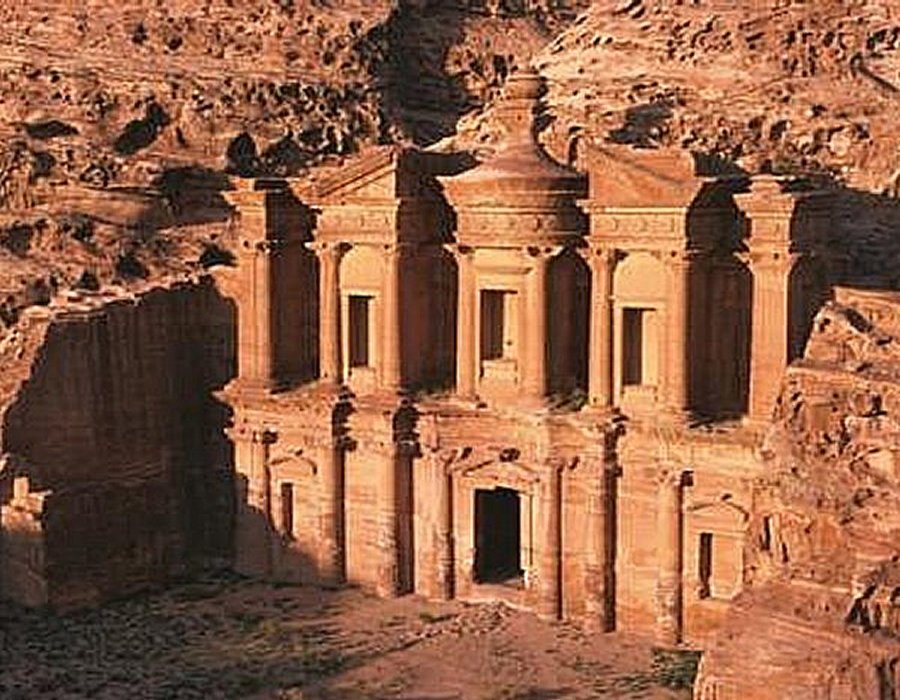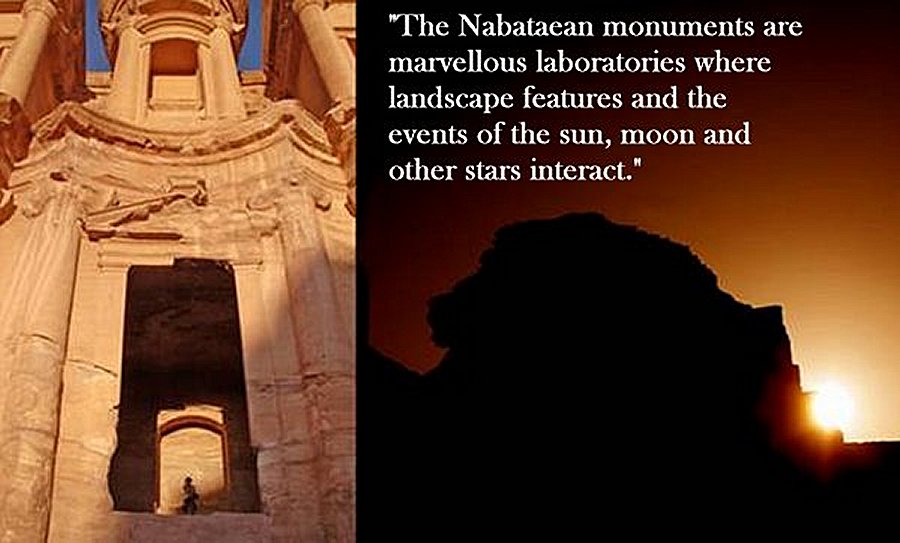MessageToEagle.com – Evidence for ancient and prehistoric astronomy exists but most of it is indirect and rather hidden.
The Nabateans watched the sky systematically and accurately and the proof of their astronomical observations can be find in Petra’s celestially aligned buildings.
During the winter solstice, the sun is filtered into the Monastery at Petra, Jordan, illuminating the podium of a deity. Just at this moment, the silhouette of the mountain opposite draws the head of a lion, a sacred animal.

These are examples from a study where researchers from Instituto de Astrofisica de Canarias and CSIC (Spain) showed how celestial events influenced the orientation of the great constructions of the Nabateans.
The movement of the Sun in the skies of Petra – perhaps the most spectactular ancient city – determined the way in which the monuments of this and other Natabean cities were erected.
Scientists from Instituto de Astrofisica de Canarias (IAC) and CSIC, Spain, and the University of Perugia (Italy) have analyzed the spatial position of the Nabatean’s palaces, temples and tombs.
Their results indicate that those Great buildings were erected bearing in mind the equinoxes, solstices and other astronomical events that determined the Nabataean religion.
The Nabataeans prospered in the first century BC and the first century AD in what is now Jordan and neighbouring countries.
The Nabateans are mentioned about the beginning of the Christian era as a race distinguished for their astronomical and general knowledge. It is supposed that they were the ancestors of the ancient Babylonians and Chaldeans.

“The Nabataean monuments are marvellous laboratories where landscape features and the events of the sun, moon and other stars interact,” Juan Antonio Belmonte, researcher of IAC and coordinator of the study, stressed to SINC.
See also:
Astronomically Aligned Temples And Pyramids Of Ancient World
“The astronomical orientations were often part of an elaborate plan,” he added “and, possibly, a mark of the astral nature of their religion, which showed incredible ‘hierophanies’ or demonstrations of the sacred on monuments related to cultic times and worship”.
A clear example is seen in Ad Deir, the Monastery at Petra. During the winter solstice, the light of the setting sun entering through the gate of the monument illuminates the sacred motab. It is a podium where some stone blocks, which represent divinities such as the god Dushara, are placed.
“The effect is spectacular, and would have only been observable during the few days closest to this solstice,” commented Belmonte, who also emphasises how, just in this moment, another curious phenomenon is produced.
As observed from the motab itself, the setting of the sun recreates the aspect of the head of a lion, the animal of the Nabataean goddess Al Uzza, on the opposite rocks.
Sunset phenomenology in the western horizon (a) related to the solstices and the equinoxes as seen from the Urn tomb enclosure (b). Our data suggests that the site and the internal distribution of the monument were deliberately chosen with an astronomical objective in mind. Adapted from Belmonte et al. (2013a)
Mathematical calculations also show the astronomical plan that the Urn Tomb follows, another famous monument where king Malichus II is thought to be buried. Its main gate is centred with its environment according to the equinox sunset, when the day equals the night, and the solar rays during the summer and winter solstices establish the two interior corners of the building.
“This amazing set of three alignments within the plan of the tomb, in combination with significant features in the distant horizon can hardly be ascribed to chance,” underlined Belmonte. “We consider that it is a deliberate attempt to convert the hall of the Urn Tomb into a type of time-keeping device”.
When in 446 AD the Christian Bishop Jason converted the Urn Tomb into the Cathedral of Petra, the solsticial markers also served as a reference in determining Christmas Eve (24 December) and St. John the Baptist (24 June), the date on which the monument was consecrated to the new religion.
Research published in ‘Nexus Network Journal’
MessageToEagle.com






